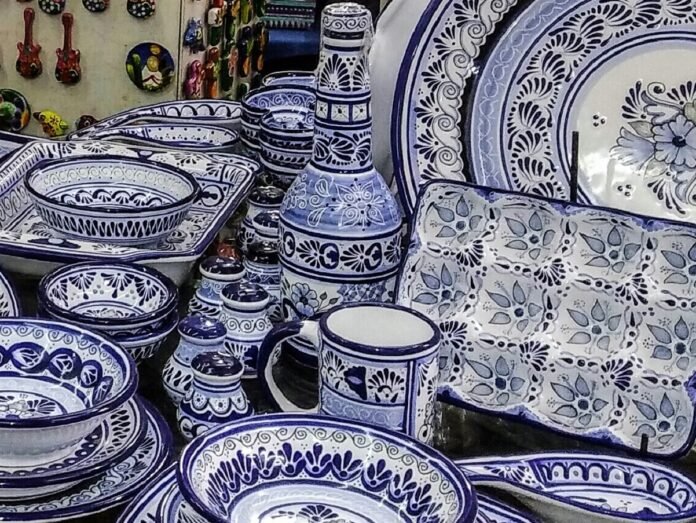Blue and white ceramics have always been a favorite of mine since my grandmother gave me a small delicate pitcher from Italy. It is at least 100 years old and today sits in my home here in Vallarta. Imagine my surprise when, shortly after I moved here, I walked by a shop displaying beautiful blue and white ceramics! I had to find out more.
Known as Talavera, it is popular among locals and collectors alike. The name comes from the original Talavera de la Reina near Toledo, Spain, where, at the end of the 12th century, the original ceramics were created based on a combination of Moorish and Spanish designs.
This style was brought to Mexico by the conquistadors during the early 1500s. The Spanish monks who followed wanted to use Talavera tiles to decorate the new monasteries and churches being built in Mexico during this time. The clay around the area of Puebla was ideal.
Thus, the monks taught the local indigenous people how to produce these ceramics. It takes about three months to complete a single piece.
By 1550, the city of Puebla was producing high-quality Talavera wares; by 1580, it had become the center of Talavera production in Mexico.
The period between 1650 and 1750 was later known as the Golden Age of Talavera. The industry has gone through several ups and downs. In particular, the War of 1812 disrupted trade among the Spanish colonies while shutting down the Talavera factories.
The Talavera market crashed. Only seven of the forty-six workshops that produced Talavera in the 18th century remained after the war. Today, there are about 15 families in Mexico who are producing authentic Talavera.
Due to the increase in other countries making cheap replicas in 1997, the government created the Denominación de Origin de la Talavera, which aimed to regulate what pieces could officially be called Talavera.

Requirements included the production city, the clay used, the original designs, and the manufacturing methods. These pieces now carry holograms of the certified families.
The remaining Talavera workshops had maintained the high quality and crafting process from the early colonial period, while the goal was to protect this old tradition.
My favorite Talavera shop is Señor Talavera, operated by Moises Jimenez. His is one of four Talavera shops in Vallarta that I know of. Some sell older pieces, which are decidedly more expensive. Moises works with the Hernandez family from Puebla, Mexico, whose ceramics are newer and thus less costly. That means Moises moves a lot of pieces through his shop, as his prices and shipping policy are the best I have seen.
Today, Moises carries the original blue and white patterns, multi-colored designs, and the newer black and white design for more contemporary tastes.
You can still see the influences of the Spanish artisans, along with some Italian and Chinese, all of whom first began with the ancient cobalt blue glaze from centuries ago.
Visit Señor Talavera at: Calle Encino 275 on the Cuale River, Puerto Vallarta.


